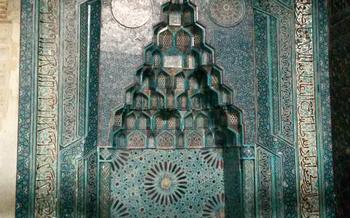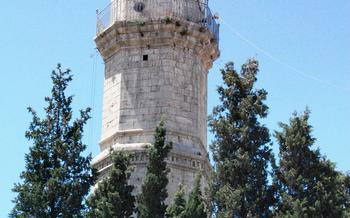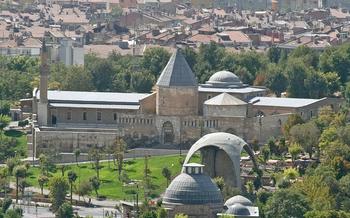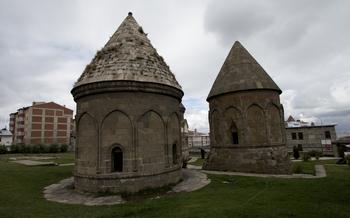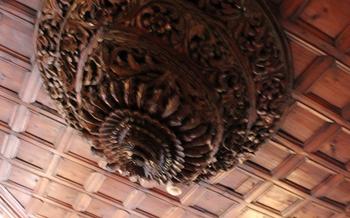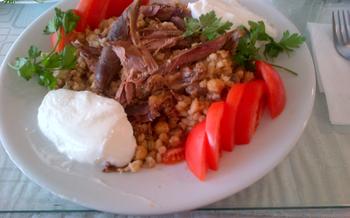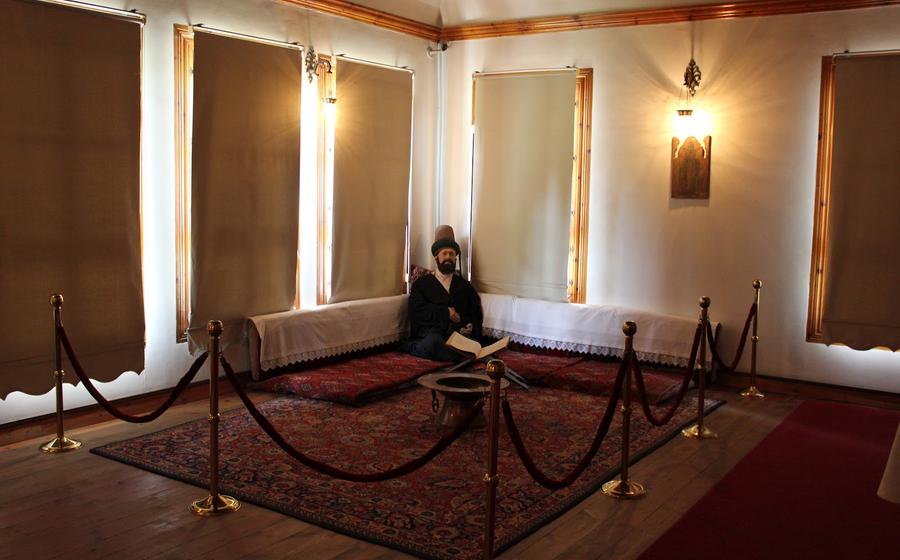
Niksar Castle Mosque
- Architectural Marvels
- Interior Splendor
- Historical Context
- Cultural Significance
- Visitor Experience
- Local Legends
- Panoramic Views
- Exploring the Castle Grounds
- Nearby Attractions
- Local Cuisine
- Festivals and Events
- Accommodation Options
- Transportation Tips
- Insider Tip
Architectural Marvels
The Niksar Castle Mosque stands as a testament to the architectural prowess of the Seljuk Empire. Its exterior is adorned with intricate stonework, showcasing the skilled craftsmanship of the era. The striking carvings and decorative tilework that embellish the facade create a visually captivating display that draws visitors in.
Inside the mosque, the central dome dominates the vast prayer hall, supported by four massive pillars that allow for ample natural light to illuminate the interior. The dome's intricate design and the interplay of light and shadow create a sense of awe and tranquility. The minarets, towering over the mosque, represent the power and presence of Islam in the region, beckoning worshippers to prayer with their graceful silhouette.
Interior Splendor
The interior of the Niksar Castle Mosque is a testament to the grandeur and artistry of Seljuk architecture. Awe-inspiring in its scale and beauty, the vast prayer hall is supported by massive pillars that create a sense of spaciousness and grandeur. The mihrab, the focal point of the mosque, is a masterpiece of intricate carvings adorned with verses from the Quran. Its design and craftsmanship symbolize the importance of the Quran in Islamic worship.
The minbar, a raised platform used by the imam to deliver sermons, is another striking feature of the mosque. Its intricate carvings and inlaid mother-of-pearl add to the overall opulence of the interior. The walls and ceilings of the mosque are adorned with exquisite calligraphy and tilework, creating a mesmerizing display of Islamic art. The intricate patterns and vibrant colors of the tiles evoke a sense of spiritual serenity and beauty, making the interior of the Niksar Castle Mosque a true feast for the eyes.
Historical Context
The Niksar Castle Mosque stands as a testament to the Seljuk Empire's architectural prowess and its significant role in shaping the history of the region. The Seljuk Empire, a powerful dynasty of Turkic origin, emerged in the 11th century and quickly expanded its influence across Central Asia and the Middle East. Under the Seljuks, Anatolia became a center of Islamic culture and learning, with the Niksar Castle Mosque serving as a symbol of their military and religious authority.
The mosque's strategic location atop the Niksar Castle grounds played a crucial role in defending the region against invasions and consolidating Seljuk control. The castle's fortifications, including its thick walls and watchtowers, provided a strong defensive position, while the mosque's minarets served as lookout points for spotting approaching enemies. The mosque's construction reflected the Seljuks' commitment to spreading Islam and establishing a strong Islamic presence in the region. It became a focal point for religious and cultural activities, attracting scholars, students, and pilgrims from across the empire.
When the Ottomans conquered the area in the 15th century, the Niksar Castle Mosque continued to serve as a significant place of worship and a symbol of Islamic identity. The Ottomans respected and preserved the mosque's architectural integrity, recognizing its historical and religious value. Throughout the centuries, the mosque has undergone several renovations and additions, reflecting the changing architectural styles and influences of different eras. Today, it stands as a magnificent blend of Seljuk and Ottoman architectural elements, a testament to the rich history and cultural heritage of the region.
Cultural Significance
The Niksar Castle Mosque holds immense cultural significance as a hub of religious, social, and educational activities. Throughout history, the mosque has served as a place of worship for Muslims, where locals congregated for prayers, religious ceremonies, and festivals. In addition to its religious significance, the mosque was also a center of Islamic learning, attracting scholars and students from across the region. These scholars engaged in intellectual discussions, studied religious texts, and disseminated knowledge within the community. As a result, the mosque became a hub for the exchange of ideas and the preservation of Islamic heritage.
The Niksar Castle Mosque is a testament to the rich cultural tapestry of Turkey, representing the country's deep-rooted Islamic traditions and its commitment to education. Its enduring legacy as a place of worship, learning, and community gathering makes it a symbol of Turkish and Islamic identity, revered by both locals and visitors alike. To this day, the mosque continues to play a vital role in the cultural and religious life of Niksar, attracting worshippers, scholars, and tourists who come to experience its historical significance, architectural beauty, and spiritual ambiance.
Visitor Experience
Visiting the Niksar Castle Mosque is a remarkable experience that combines historical exploration with a sense of tranquility and spirituality. The mosque is open to the public, inviting visitors to immerse themselves in its architectural beauty and rich history. For the best experience, it is recommended to visit during the early morning or late afternoon when the sunlight casts a warm glow on the stonework, creating a picturesque scene. Visitors are encouraged to dress respectfully and maintain a quiet demeanor to preserve the sacred atmosphere of the mosque. Guided tours are available for those who wish to learn more about the mosque's history and significance. Whether seeking a spiritual connection or simply appreciating architectural wonders, the Niksar Castle Mosque is a must-visit destination that offers a truly enriching experience.
Local Legends
Local legends and stories intertwine with the history of the Niksar Castle Mosque, adding a touch of mysticism and folklore to its narrative. One captivating tale speaks of a hidden treasure buried beneath the mosque, said to have been amassed by the Seljuk sultans and guarded by a powerful djinn. Another legend tells of a secret tunnel leading from the mosque to the nearby Niksar River, allegedly used by the defenders of the castle to escape during times of siege.
These legends resonate deeply within the local community, shaping the cultural identity of the region. Some believe that the hidden treasure is real and actively search for it, while others see the legends as a way to preserve the mosque's rich history and traditions. Regardless of their veracity, these stories add an air of intrigue and enchantment to the Niksar Castle Mosque, captivating visitors and inspiring their imaginations.
Panoramic Views
The Niksar Castle Mosque offers breathtaking panoramic views of the surrounding landscape, making it a perfect spot to soak in the beauty of the region. From the elevated position atop the castle grounds, visitors can feast their eyes on stunning vistas that stretch as far as the eye can see. The Niksar River meanders through the valley below, reflecting the sunlight and creating a picturesque scene. The city of Niksar lies nestled amidst lush greenery, with its red-tiled roofs and minarets piercing the skyline. In the distance, the majestic mountains rise up, their peaks capped with snow.
The best vantage points within the mosque to capture the panoramic views are the upper galleries and the roof terrace. From these vantage points, visitors can take stunning photographs and create lasting memories of their visit. The sunset is a particularly magical time to visit the mosque, as the sky transforms into a canvas of vibrant colors, casting a warm glow over the surrounding landscape. This creates an unforgettable experience that will leave visitors in awe of the beauty of Niksar and its surroundings.
Exploring the Castle Grounds
Beyond the mosque, the Niksar Castle grounds beckon visitors to delve deeper into the site's rich history and hidden gems. Explore the ancient fortifications, towers, and structures that stand as testaments to the castle's defensive prowess. Discover the strategic significance of its location, which allowed for effective control and surveillance of the surrounding area. Embark on a leisurely stroll through the castle grounds, soaking in the ambiance and imagining the bustling activity that took place centuries ago. Let your imagination soar as you wander through the remnants of the past, uncovering the secrets and stories that lie within the castle's walls.
Nearby Attractions
Beyond the captivating Niksar Castle Mosque, the city of Niksar offers a tapestry of historical and cultural attractions that beckon visitors to explore further. Enrich your journey by delving into the Tokat Museum, a treasure trove of artifacts and exhibits that unravel the rich history and vibrant culture of the region. Discover the architectural legacy of the Ottoman era by visiting the nearby mansions, each whispering tales of past grandeur and exquisite craftsmanship. Ascend to the Tokat Castle, a majestic sentinel that stands proudly in the city center, inviting you to explore its fortifications and immerse yourself in the echoes of bygone eras. Niksar is a city that seamlessly blends the past with the present, offering a captivating blend of history, culture, and natural beauty that will leave an indelible mark on your soul.
Local Cuisine
In Niksar, visitors have the opportunity to indulge in a culinary journey that showcases the region's rich flavors and traditions. Tokat cuisine is renowned for its use of fresh, seasonal produce and traditional cooking methods that have been passed down through generations. One must-try dish is keşkek, a hearty wheat and meat stew that is often served during special occasions. Another local delicacy is Tokat kebabı, a succulent grilled meat dish that is sure to tantalize the taste buds.
For a truly authentic experience, visitors should venture into the local markets or restaurants to sample the diverse culinary offerings. Whether it's savoring the delicious street food or dining in a traditional Turkish restaurant, there is something to satisfy every palate. By supporting local businesses, visitors not only get to experience the true flavors of Tokat but also contribute to the preservation of the region's culinary heritage.
Festivals and Events
Niksar, with its rich cultural heritage, hosts a variety of festivals and events throughout the year that offer visitors a chance to immerse themselves in the local traditions and customs. The Tokat Festival, held annually, is a vibrant celebration of Tokat's culture, showcasing traditional music, dance, and handicrafts. This lively festival attracts visitors from near and far, providing a unique opportunity to experience the region's rich artistic expressions. Additionally, the Niksar Castle Mosque plays a central role in hosting religious festivals and ceremonies, such as the Mevlid-i Nebi, which commemorates the birth of Prophet Muhammad. These events offer visitors a glimpse into the spiritual traditions of the region and provide an enriching cultural experience. To make the most of your visit, check local event calendars or inquire with tourist information centers to find out about upcoming festivals and events during your stay.
Accommodation Options
Niksar offers a range of accommodation options to suit different budgets and preferences. For a comfortable and convenient stay, consider booking a room at one of the modern hotels located near the city center. These hotels offer amenities such as air conditioning, Wi-Fi, and room service, ensuring a pleasant and hassle-free stay.
For a more authentic experience, opt for a traditional Turkish house, also known as a konak. These charming guesthouses often feature intricate architecture, cozy interiors, and a warm ambiance. Immerse yourself in Turkish culture by staying in one of these historic homes, where you can enjoy traditional Turkish hospitality and learn about local customs and traditions.
To be within walking distance of the Niksar Castle Mosque and other attractions, it is recommended to stay in the historic center of Niksar. This vibrant neighborhood offers a variety of accommodation options, from budget-friendly hostels to mid-range hotels, allowing you to choose the perfect place to rest and recharge during your stay.
Remember to book your accommodation in advance, especially during the peak tourist season, to secure the best options and avoid disappointment. Online booking platforms and travel agencies can assist you in finding the ideal accommodation that fits your needs and budget.
Transportation Tips
Reaching Niksar from major cities in Turkey is relatively easy. The city is well-connected by air, with flights available from Istanbul and Ankara. For those traveling by land, there are regular bus services from major cities, and the journey takes approximately 10-12 hours. Niksar also has a train station, with services connecting it to other parts of the country.
Once in Niksar, visitors can easily get around on foot. The city is compact, and the main attractions, including the Niksar Castle Mosque, are within walking distance of each other. Taxis and rental cars are also available for those who prefer a more convenient option.
To truly immerse oneself in the local culture, consider exploring the city on foot. This allows visitors to discover hidden gems and charming side streets that may not be accessible by car. Guided tours and local guides are also available to provide insights into the history and culture of Niksar and its attractions.
Insider Tip
Venture beyond the mosque's main entrance and discover a hidden courtyard tucked away amidst the castle walls. This tranquil oasis offers a serene escape from the bustling city, inviting visitors to pause and reflect. Take a moment to admire the intricate stone carvings that adorn the courtyard's walls, each telling a story of the mosque's rich history. As you soak in the peaceful ambiance, let your imagination transport you back in time, envisioning the scholars and pilgrims who once sought solace and inspiration within these ancient walls.


